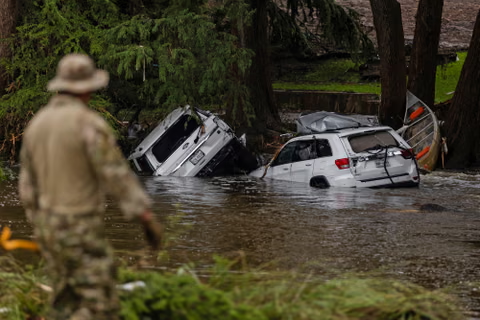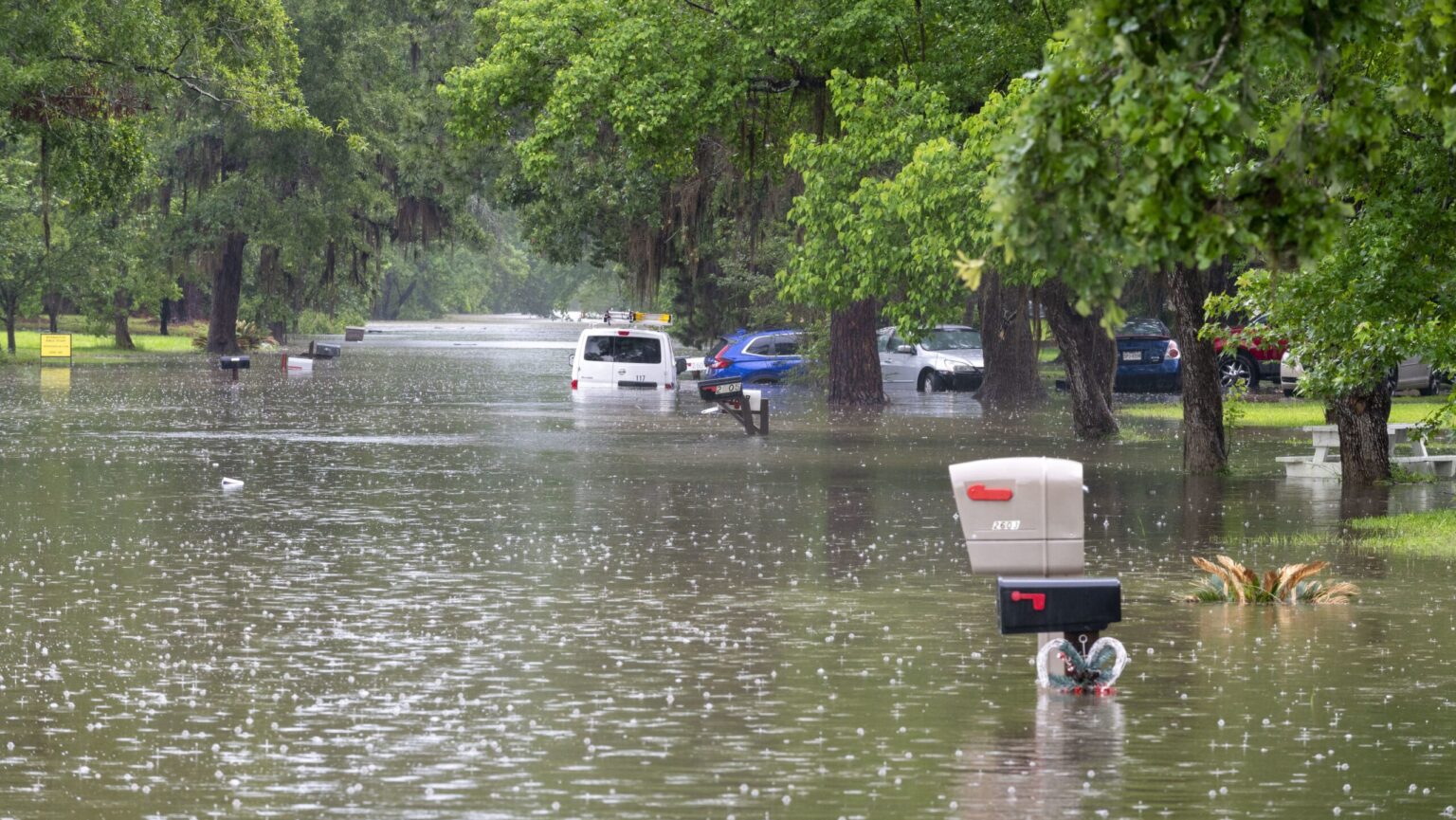A brewing storm across Texas
Texas is no stranger to storms, but this week feels different. The state is facing the growing threat of dangerous flash flooding as Tropical Storm Lorena combines forces with a surge of Gulf moisture. The result is a volatile atmosphere that could unleash heavy rainfall, swollen rivers, and flooded neighborhoods across several regions of Texas. For many families, this means bracing for sleepless nights, watching weather alerts, and preparing emergency plans. Yet even in the face of danger, the people of Texas show a resilience that continues to inspire the nation.
What is happening with Lorena and Gulf moisture
Lorena, forming in the Gulf and pushing inland, is not the most powerful storm Texas has ever seen, but it carries with it something uniquely dangerous an almost endless supply of moisture. This moisture is expected to collide with unstable weather patterns already hovering over Texas. The atmosphere is loaded with humidity, meaning that when the storm passes through, it could dump staggering amounts of rain in a very short time. That is what makes flash flooding such a serious risk.
Flash floods are not like normal floods that build up gradually. They strike quickly and with little warning, filling up streets, highways, and homes before people can fully react. Experts warn that even a few inches of rain per hour can transform a safe road into a deadly trap. With Lorena intensifying and Gulf winds pushing rain inland, many parts of Texas could experience this sudden shift from calm to chaos.
The regions most at risk
Forecasters have pointed to central and eastern Texas as the areas most vulnerable, though nearly the entire state could feel the storm’s reach. Low-lying regions near rivers are expected to be especially hard-hit. Urban areas, with their concrete surfaces and limited drainage systems, face a different challenge: water pooling in streets and overwhelming storm drains.
Cities like Houston, Austin, and San Antonio are bracing for downpours, while rural areas may deal with swollen creeks and flash floods sweeping across farmland. The situation is further complicated by already saturated ground in many parts of the state. When the soil is too wet to absorb more water, even moderate rainfall can cause significant flooding.

Human impact and the emotional weight
Beyond forecasts and data, what stands out is the human side of this unfolding event. Families are gathering emergency supplies, checking flashlights, and making sure their children understand what to do if power goes out. Parents worry about how to keep their loved ones safe, while communities are organizing local shelters and checking on elderly neighbors.
There is a mix of fear and determination in the air. Floods are deeply personal events; they invade homes, destroy belongings, and disrupt lives in ways that linger long after the water recedes. Yet even with the looming storm, Texans are known for their courage and readiness to lend a hand. That sense of community is what allows people to endure not just the physical floodwaters but the emotional waves that follow.
Emergency preparations across Texas
As warnings spread, authorities are urging Texans to take proactive measures. Stocking up on food, water, and medicine is just the beginning. Families are being advised to have evacuation plans ready in case roads become impassable. Shelters are being prepared to house those who may be displaced by floodwaters.
First responders are already on high alert, with rescue boats and high-water vehicles positioned strategically across vulnerable counties. Hospitals and emergency services are coordinating to ensure they can respond quickly if needed. Even schools and local businesses are playing their part, adjusting schedules or preparing to provide safe spaces.
The storm is a reminder that preparedness is not just a government responsibility but a shared duty among citizens. From sandbagging homes to checking on neighbors, every action counts.
The science behind flash floods
To understand why flash flooding is such a pressing danger, it helps to look at the science. Rainfall intensity and ground saturation are the two most critical factors. In Texas, Lorena is expected to deliver rainfall at rates exceeding several inches per hour. The Gulf’s moisture essentially acts as fuel, allowing the storm to produce more rain than a typical weather system.
The terrain in many Texas regions worsens the risk. Dry, compacted soil in some areas repels water, causing it to run off quickly into streams and creeks. Urban areas, covered in asphalt and concrete, act the same way, forcing water to collect in dangerous pools. This combination means that flash floods can happen almost instantly, leaving little room for error or delay in response.
Stories of resilience from past floods
Texans have faced similar challenges before, and history is filled with stories of bravery and resilience. During previous storms, neighbors used boats to rescue stranded families. Volunteers worked around the clock at shelters, offering food and comfort to those who had lost everything. Faith groups, community centers, and local businesses all played their part, turning moments of despair into reminders of unity.
Those same stories echo today. Social media is already buzzing with residents offering help—sharing truck space, promising to check on vulnerable individuals, and posting real-time updates for their communities. It is this kind of spirit that makes Texans uniquely prepared to withstand hardship.

The role of climate change
While storms like Lorena are not new, scientists point to a troubling trend: extreme weather events are becoming more frequent and intense. Warmer ocean waters provide more energy for storms, and shifting climate patterns are making rainfall events heavier. This does not mean every storm is caused by climate change, but it does mean that the risks are heightened.
For Texas, a state with long coastlines and varied terrain, the challenge is especially complex. Preparing for the future may mean rethinking infrastructure, investing in stronger drainage systems, and educating communities about the growing threats. These long-term strategies are essential if the state is to reduce the human and financial toll of repeated flooding.
What to do if caught in a flash flood
Safety is always the top priority when storms strike. Texans are reminded of a simple but life-saving rule: “Turn around, don’t drown.” It only takes a small amount of moving water to sweep away a vehicle, and walking through floodwaters can be equally deadly.
People are urged to stay indoors during heavy rain, avoid driving unless absolutely necessary, and listen to local emergency alerts. Families should keep important documents in waterproof containers, charge phones ahead of the storm, and make sure pets are included in their emergency plans.
Even when fear is strong, preparation brings confidence. Knowing what to do can turn panic into action and save lives in the process.
A test of spirit for Texas
As Lorena gathers strength and Gulf moisture fuels its rains, Texas once again finds itself in nature’s path. The coming days may be filled with challenges flooded roads, power outages, and sleepless nights—but the story is not just one of danger. It is also one of strength, resilience, and hope.
Communities are preparing not just to endure but to support one another. Volunteers, first responders, and everyday citizens are ready to rise to the occasion, proving that even in the darkest storms, the human spirit shines brightest.
Looking ahead with hope
Floodwaters may rise, but so does the determination of Texans. This storm, like many before it, will leave behind scars. Yet it will also leave behind lessons, memories of kindness, and proof that courage is stronger than fear.
The dangerous flash flooding risk in Texas is real, but so too is the resolve of its people. With preparation, compassion, and unity, Texas will weather Lorena’s storm and emerge with stories of survival, resilience, and a renewed sense of community.
Do follow Gulf Magazine on Instagram.
Also Read – Sour Sally Frozen Yogurt Launches in UAE, Redefining Dessert Culture



